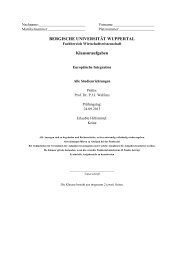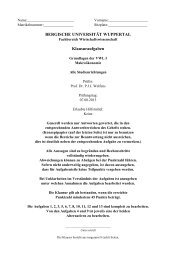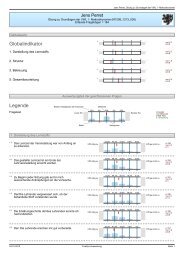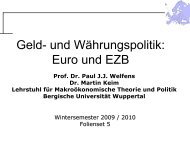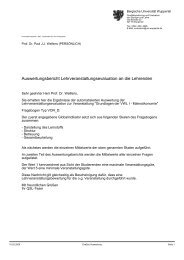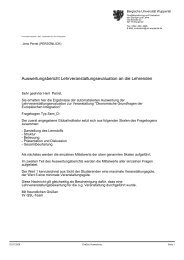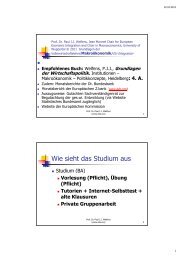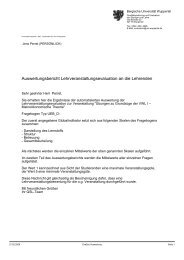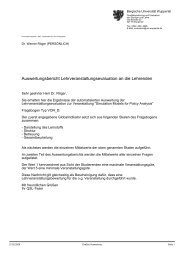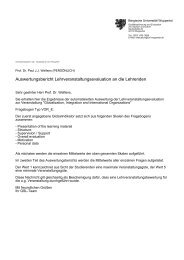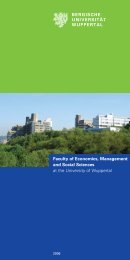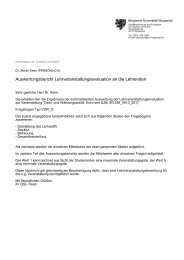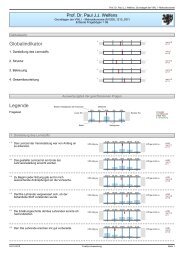UNIVERSITÄT POTSDAM - Prof. Dr. Paul JJ Welfens
UNIVERSITÄT POTSDAM - Prof. Dr. Paul JJ Welfens
UNIVERSITÄT POTSDAM - Prof. Dr. Paul JJ Welfens
You also want an ePaper? Increase the reach of your titles
YUMPU automatically turns print PDFs into web optimized ePapers that Google loves.
So flat rate pricing will lead to a steep rise in demand for private and corporate Internet<br />
use. This will likely result in increased investment in transmission capacities, due to<br />
time-related bottlenecks. The resulting employment effects will likely represent a rising<br />
share of the predicted increase in total employed persons (using the broader Internet<br />
use indicator) in the total information industry. Flat rate pricing at the retail level demands<br />
the introduction of similar models in the wholesale sector or rather in relations<br />
between dominant network operators and service providers (CAVE/ CROWTHER,<br />
1999).<br />
Meanwhile, there are indeed ways for Internet providers to influence the times<br />
at which users access the system. One conceivable option is that of bonus points for<br />
users who go on the Internet at off-peak times, where the bonus points could be used as<br />
“admission fees” for buying information stored in user clubs or for free access to certain<br />
services. Other user incentives are also conceivable in the interest of optimizing<br />
Internet use.<br />
According to a number of current studies, the cost of data traffic based on Internet<br />
protocol are significantly lower than in conventional telephone traffic; orders of<br />
magnitude of 1:10 and more are quoted. This creates interesting growth perspectives<br />
for Internet telephony services and other Internet-based services. Still, the Internet expansion<br />
potential hinted at here can only be realized if new types– albeit cost-oriented<br />
by all means – of flat rate models are applied at the wholesale and retail level.<br />
4.3 Telecommunications and Foreign Trade<br />
International trade among OECD countries and worldwide has strongly increased after<br />
World War II. Explaining trade traditionally rests upon differences in factors supplies<br />
and relative prices on the one hand (survey CAVES / FRANKEL / JONES, 1990); on<br />
the other hand Schumpeterian influences associated with product cycle trade or trade<br />
with differentiated products plays a major role; the latter has stimulated models with<br />
monopolistic competition (e.g. DIXIT / NORMAN, 1980; KRUGMAN, 1979;<br />
LANCASTER, 1980; HELPMAN / KRUGMAN, 1990). Technological aspects also<br />
are important for goods characterized by static and dynamic scale effects. A very important<br />
link exists between per capita income and trade: on the one hand rising per capita<br />
income will raise the demand for differentiated products; on the other hand an increase<br />
in national output will raise the demand for intermediate and final products.<br />
Thus the impact of a rising aggregate output can – with population given – reflect two<br />
different links between trade and income.<br />
From a theoretical point of view, transaction costs and information costs play an<br />
important role for international trade, but little empirical research has been made about<br />
44



